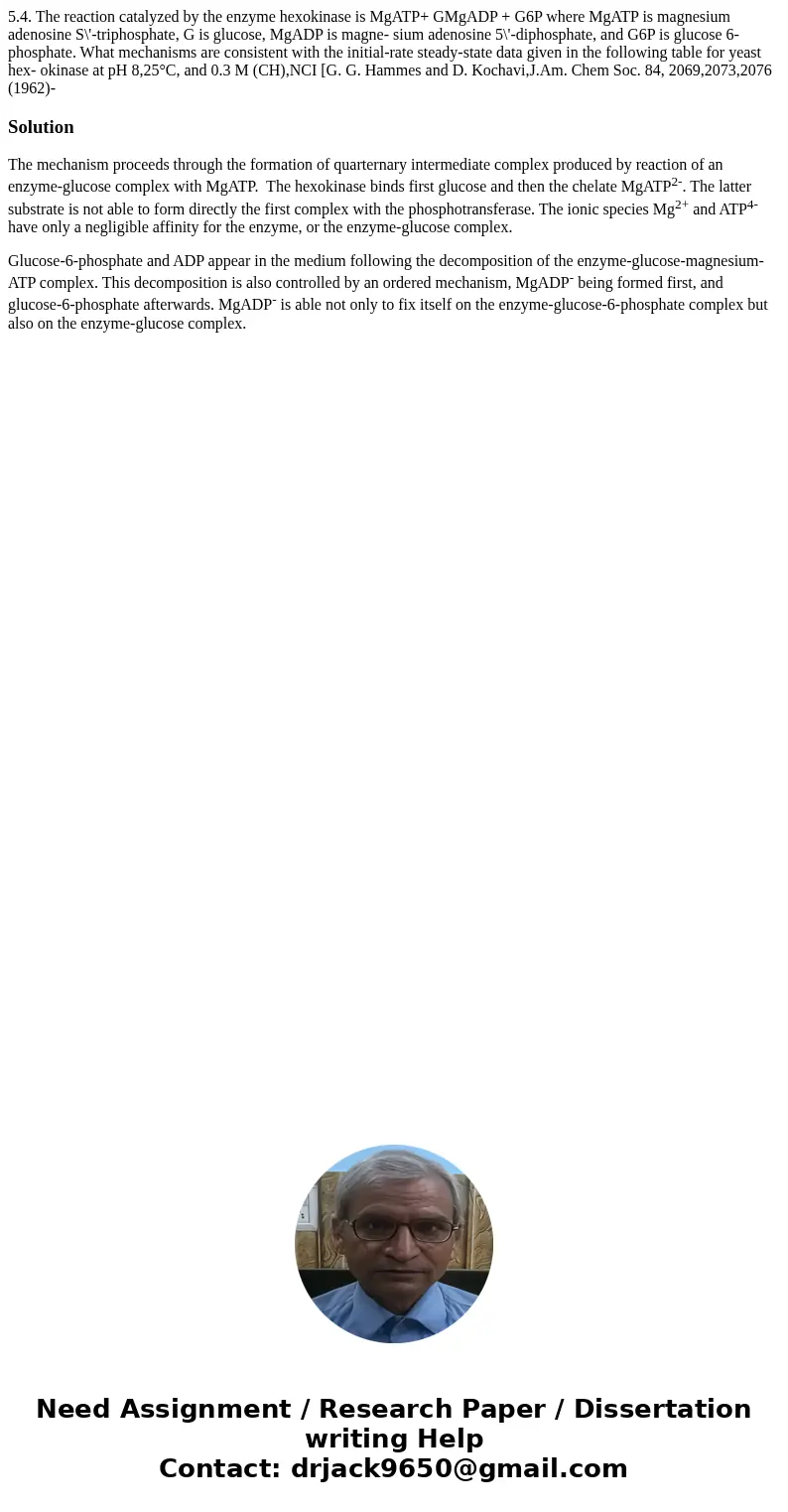54 The reaction catalyzed by the enzyme hexokinase is MgATP
Solution
The mechanism proceeds through the formation of quarternary intermediate complex produced by reaction of an enzyme-glucose complex with MgATP. The hexokinase binds first glucose and then the chelate MgATP2-. The latter substrate is not able to form directly the first complex with the phosphotransferase. The ionic species Mg2+ and ATP4- have only a negligible affinity for the enzyme, or the enzyme-glucose complex.
Glucose-6-phosphate and ADP appear in the medium following the decomposition of the enzyme-glucose-magnesium-ATP complex. This decomposition is also controlled by an ordered mechanism, MgADP- being formed first, and glucose-6-phosphate afterwards. MgADP- is able not only to fix itself on the enzyme-glucose-6-phosphate complex but also on the enzyme-glucose complex.

 Homework Sourse
Homework Sourse